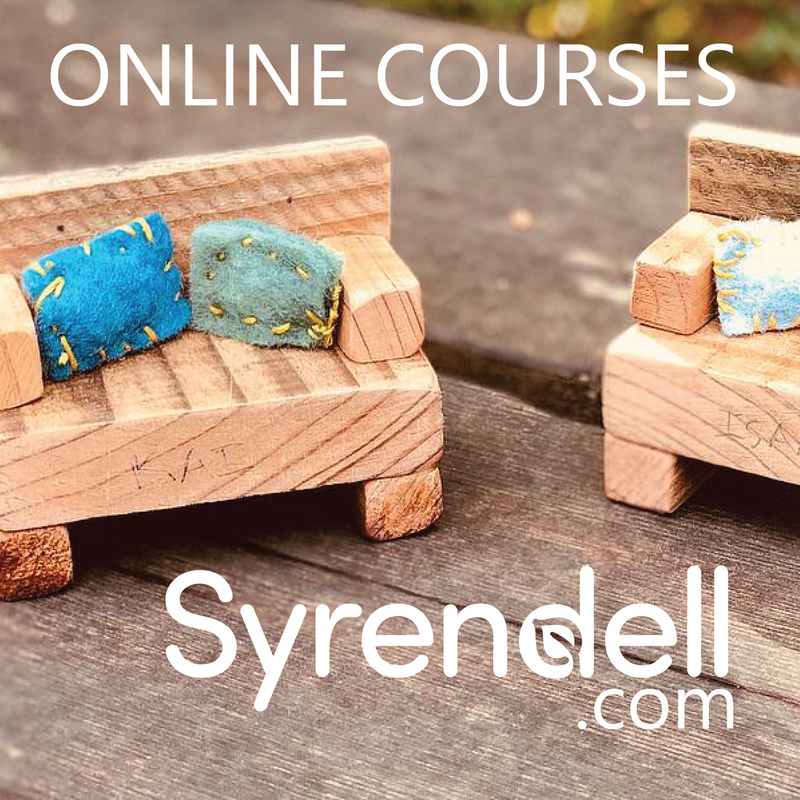|
To herald the upcoming Alliance Conference at Rudolf Steiner College next weekend, Syrendell is re-posting favorite RSC-inspired blog posts from The Waldorf Way. This one was from August 1, 2010. Melody finds the deepest places within our bodies and pulls us to float on each note. Harmony weaves the threads that wrap us in color, warmth, and love. Lyrics resound like a warrior god or whisper like a dreamy lover.
But a choir of voices, oh how truly the song of many hearts enraptures the soul! Morning singing with Eva Cranstoun, enhanced by the acoustics of Stegmann Hall, begins a wondrous, romantic day at Rudolf Steiner College. We enter the room with hardwood floors and plastered walls, and find chairs neatly positioned in a gentle arch with a piano and Eva at the center. Quiet good mornings and hellos and how are yous are exchanged, and with a faint yet purposeful chord from the piano, Eva captures our attention. She smiles, and before even a sound is uttered from her lips, she already appears to be singing. I believe her angels just hover around her, and they are most likely humming perpetually. A room full of striving individuals, Waldorf teachers, with varying levels of singing experience, most with a mild dose of singing confidence. Eva is smiling because she senses, she knows, that each of us are carrying an instrument that can produce sound, beautiful, rich sound. Like all fine instruments, it needs to be prepared and developed. And the musician, with his or her own vocal instrument, must understand the rudimentary skills to use it well. Posture is a key element to prepare us for singing. Eva directs us to slouch with half-present eyes, then to shift to an upright sitting position with alertness in our eyes and a smile. It is an effective technique, for the difference in mood and feeling of readiness is apparent – with the proper posture and mindset, we look ready, we feel ready. We do not sit with stiffness in our bones, or tenseness in our shoulders. We move with gentle rolling motions; we loosen our necks. When we are to sing, we must be aware of the muscles in our bodies and remain supple, yet firm. We must be aware of our breathing, and the muscle of singing, the diaphragm. Air can then travel with ease in and out of our airways to feed the vocal cords. Eva looks at us and when she sees that we are ready to practice our instruments, she gives brief instructions. She demonstrates how we are to hold our lips, our tongues, cheeks, jaws, and teeth to form the sounds. She sings a few notes. With just warm up scales, she sounds absolutely divine! Where is that voice coming from, penetrating through us, vibrating in our bones and our minds? It comes from Eva’s instrument, no doubt cared for and practiced with reverence. She models how we are to treat our instruments. We sing, and outwardly, it does not sound bad at all. Inwardly, confidence is building. She gives us a few sheets of music. Shalom Aleichem is one of the songs and clearly, Eva has the confidence that we are capable of singing in three part harmony. She sings each part, she plays each part. We imitate and sing. First, get the melody, she says. In Hebrew, the words are meaningless to us (unless you can read Hebrew), but no matter, it makes us focus on the melody, on the quality of the sound. Now, get the words. Listen to each other; always listen for each other’s voices. With our vocal development flowing nicely in a week’s worth of Eva’s insights and modeling, we sing a new song, Where is the Moon. Eva mentions that it is a wonderful song to sing for the sixth graders. As a teacher for the sixth grade next year, I am lucky to have a few songs that we practiced for that grade level. I pose a question to her: If I cannot reach the high notes of that song, how am I to teach it to the sixth graders? Eva addresses my concern. I can certainly play the piano to teach the children the melody and the right pitches. However, as is the way of Waldorf, we teach how to be striving, living, loving individuals. You must sing, Eva says with conviction. And I agree with her, I must show courage in the act of singing, this is key to my vocal development. My class must see that I am not afraid, that I am willing to try, for that is the golden lesson after all. And what better way to learn a lesson than through song. Eva teaches the class about vocal development, but I am a romantic, so I believe she is really teaching us about love. Our development as a whole human being depends on embracing each aspect of our bodies and abilities. The vocal cords as our instruments deserve to be cultivated. In their cultivation can we share the love in our hearts. Then, as Mozart joyfully sings out, we can live a truly long life with romance and song! Click here for the original post. Comments are closed.
|
Archives
June 2023
|



 RSS Feed
RSS Feed
